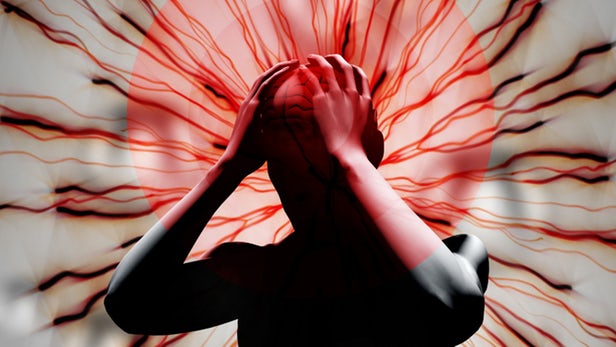You know what hurts? Pain.
你知道什么会痛吗?疼痛。
But why does pain have to hurt so much,
但为什么疼痛伤害如此之大呢,
and could we maybe dial it back a bit if the pain gets too intense?
如果疼得太厉害,我们能减轻一点点疼痛吗?
Thanks to a recent study from Stanford University, we may just be able to control how we experience pain.
感谢斯坦福大学最近的一项研究,我们或许已经能够控制痛苦的体验了。
As much as it hurts, pain is useful in most cases.
尽管疼痛让人很难受,但大多数情况下疼痛都是有益的。
It lets us know that what’s happening is bad for us or when something is seriously wrong.
它让我们知道正在发生的事情对我们是有害的,或者出现了严重的问题。
Without it, we would easily injure ourselves or not realize our bodies aren’t functioning as they should.
如果没有它,我们就会很容易伤到我们自己,或者意识不到我们的身体没有在正常运转。
In fact, there is a rare condition called Congenital Insensitivity to Pain with Anhidrosis, or CIPA,
事实上,有一种罕见的情况叫做先天性无痛无汗症,也即“CIPA”,
and people suffering from it can break bones without even knowing
得这种病的人可能在自己没有察觉到的情况下就骨折了,
or overheat easily, which is especially dangerous when they’re children.
或很容易高热,这在孩子身上尤其危险。
So pain is a good thing. Or at least the ability to feel it is.
所以,疼痛其实是件好事。至少有感受疼痛这种能力是件好事。
But there are those on the other extreme of the spectrum who experience chronic pain.
但与这种情况相反的是慢性疼痛患者。
For them, it mostly serves no purpose other than discomfort and agony.
对他们来说,除了让人不舒服和痛苦之外,慢性疼痛几乎没有任何作用。
Drugs like opioids can dull the pain,
阿片类药物等药品能够帮助人们减轻疼痛,
but they can be extremely addictive and impact other parts of the brain.
但这些药物可能成瘾性极强,还可能影响到大脑的其他部位。
So identifying exactly which neurons control the discomfort that comes with pain
所以,准确地断定是哪些神经元控制着疼痛带来的不适
can lead to new drugs that allow people to still know they’re hurting, but without the actual hurt.
能让人们知道有疼痛存在,但却不用真正感受疼痛。
That’s where a 2019 study published in the journal Science by researchers at Stanford University comes in.
这恰好也是斯坦福大学的研究人员2019年发表在《科学》杂志上的一项研究的内容。
The researchers probed mouse brains for where pain was felt,
研究人员对老鼠的大脑进行了探测,寻找疼痛的位置,
and when I say probed I mean that literally.
当我说“探测”这个词,指的就是它的字面意思。
They attached miniature microscopes to the mice’s heads
他们把微型显微镜附在老鼠的头上,
and observed their brains in real time while the mouse was just walking around, doing mouse stuff!
在它们四处跑动,做老鼠会做的事情的时候实时观察它们的大脑!
The scientists’ target was the amygdala,
科学家们的观察目标是老鼠的杏仁核,
which in humans is a small almond-shaped area associated with processing emotions.
在人类大脑中,杏仁核是一个与处理情绪有关的小区域。
But it’s really dark inside a mouse’s brain,
但老鼠的大脑里真的很暗啊,
so to see what was going on,
所以,为了看清里面的情况,
researchers introduced a fluorescent protein that lit up whenever neurons fired.
研究人员引入了一种神经元被激活时就会被点亮的荧光蛋白。

With microscopes and glow-teins in place,
有了显微镜和荧光蛋白,
researchers started poking and prodding the mice to see what area lit up when they were in discomfort.
研究人员就开始戳它们,刺它们,看它们感到不舒服的时候,哪个区域会亮。
They found about 150 neurons in a region called the basolateral that sparked up when the mouse was in pain, amygdala
他们在一个叫做“基底外侧杏仁核”的区域发现了大约150个老鼠感到疼痛时就会被点亮的神经元,
and glowed more brightly when the pain was more intense.
而且,这些神经元的亮度还会随着疼痛的加剧增加。
But the scientists weren’t looking for neurons that signaled pain,
但科学家们要找的并不是象征疼痛出现的神经元,
but the ones that signaled it was unpleasant.
而是那些表示不愉快的神经元。
To find out if the neurons they’d spotted were the ones they were looking for,
为了找出他们发现的神经元是否就是他们正在寻找的神经元,
the researchers created chemical switches that allowed them to turn the neurons on and off.
研究人员又发明了一种可以让他们打开和关闭神经元的化学开关。
When the researchers switched the neurons off,
当研究人员关闭神经元开关时,
the mice could still sense pain and would show it by displaying their usual reflex to withdraw from painful stimuli.
老鼠仍然能够感觉到疼痛,也会通过躲避疼痛刺激这种常见的反射性反应表现出来。
But they didn’t show signs the pain was unpleasant, like by avoiding the stimuli or licking their paws.
但没有表现出疼痛让它们不愉快的迹象,比如躲避刺激或舔爪子。
Essentially they could still feel pain, they just didn’t mind so much.
实质上,他们仍然能感觉到疼痛,只是不那么在意了而已。
When the researchers switched off the same neurons in mice with chronic pain,
当研究人员在患有慢性疼痛的老鼠身上切断相同的神经元时,
they found the mice didn’t mind the light touches that used to harm anymore.
他们发现老鼠不再介意曾经让它们感到不舒服的轻度触碰了。
If neurons that work the same way can be found in humans,
如果能在人类身上找到以同样方式工作的神经元,
and if these neurons have unique receptors,
而这些神经元又有独特的受体的话,
then it might be possible to develop drugs that target them and turn down their activity.
就有可能开发出针对这些受体的药物,降低它们的活性。
That would be huge news for sufferers of chronic pain,
这对慢性疼痛患者来说可谓是一个天大的(好)消息,
or even those in intense pain who might otherwise be prescribed drugs that are addictive and imprecise.
甚至对那些有剧烈疼痛的患者来说也是如此,因为否则他们就可能会被开一些会上瘾还针对性不强的药物。
It’s probably still a ways off, so in the meantime do your best not to hurt yourself.
但还有一段时间才能真正研制出这种药物,所以,在这段时间里,请尽量不要伤到自己。
So, would you let scientists attach a microscope to your brain if it meant making a major breakthrough?
那么,你会让科学家在你的大脑上安装一个显微镜吗,如果这意味着取得重大突破的话?
Let us know in the comments!
请在评论中告诉我们吧!
And for more on the science of your brain, check out this video.
了解更多关于大脑的科学知识,请看这段视频。
Thanks for watching, and I’ll see you next time on Seeker.
感谢大家的收看,我们下期节目再见。











